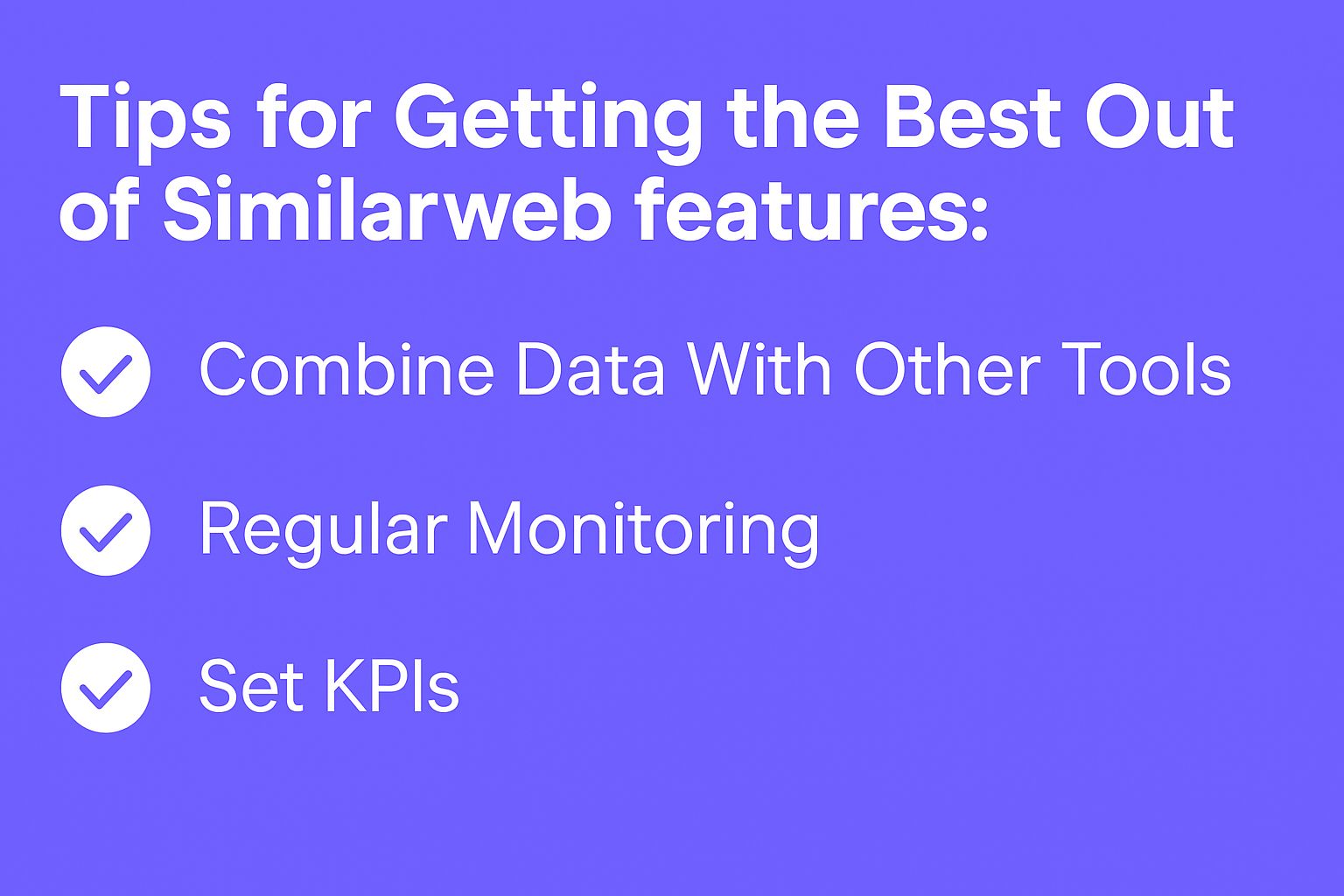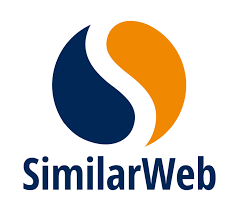


How to Leverage Similarweb Data for Better Business Decisions
Discover how to use Similarweb to make smarter business decisions. This guide explores key features, competitor analysis, audience insights, and practical strategies to help you leverage data for growth and improved digital performance.
Table of Contents
- 1 Introduction
- 2 What is Similarweb?
- 3 Key Features of Similarweb
- 4 Competitor Benchmarking
- 5 Audience Demographics & Interests
- 6 Keyword & SEO Insights
- 7 Referral and Traffic Sources
- 8 Why Businesses Use Similarweb
- 9 Market Intelligence Reports
- 10 How to Use Similarweb for Business Growth
- 11 Leveraging Similarweb Data Across Departments
- 12 Practical Use Cases
- 13 Tips for Getting the Best Out of Similarweb
- 14 Similarweb vs. Other Tools
- 15 Challenges and Limitations
- 16 Conclusion
- 17 Frequently Asked Questions
Introduction
In today’s fast-paced digital economy, businesses don’t succeed by guessing — they thrive by leveraging data. Whether you’re a marketer, a product manager, or a business owner, knowing your competitors, understanding your audience, and tracking performance are essential for growth.
This is where Similarweb steps in. Known for its ability to provide in-depth traffic and market intelligence, Similarweb has become a go-to tool for organizations that want to turn insights into actionable strategies.
So, how can you leverage Similarweb data to make better business decisions? Let’s break it down step by step.
What is Similarweb?
Similarweb is a digital intelligence platform that provides data on website performance, audience behavior, and competitive benchmarking. It helps companies measure digital activity across industries and identify new growth opportunities.
Key Features of Similarweb
Website Traffic Analysis
One of the core strengths of Similarweb is its detailed traffic insights. You can see:
- Total visits
- Average visit duration
- Bounce rate
- Pages per visit
This data helps businesses understand how their websites perform compared to competitors.
Competitor Benchmarking
Curious about how your competitor is attracting traffic? Similarweb lets you peek into their performance. You can compare:
- Monthly visits
- Audience overlap
- Referral strategies
It’s like having a spyglass into your competitors’ playbook.
Audience Demographics & Interests
Understanding your audience is half the battle. Similarweb provides insights into:
- Age groups
- Gender distribution
- Interests and categories
These insights help tailor marketing campaigns for better engagement.
Keyword & SEO Insights
With Similarweb, you can identify:
- Top organic keywords driving traffic
- Paid search strategies of competitors
- Keyword gaps you can target
This ensures your SEO and PPC campaigns stay ahead of the competition.
Referral and Traffic Sources
Not all traffic comes from Google. Similarweb reveals:
- Direct traffic
- Referral websites
- Social media performance
- Display ads impact
This helps businesses diversify and optimize acquisition channels.
Why Businesses Use Similarweb
From startups to Fortune 500 companies, organizations use Similarweb for:
- Competitor research
- SEO and marketing insights
- Market expansion analysis
- Product launch strategies
Market Intelligence Reports
For enterprise users, Similarweb offers custom market reports that track industry trends, giving decision-makers the bigger picture needed for strategic planning.
How to Use Similarweb for Business Growth
Identifying Competitors
Even if you think you know your competition, Similarweb can uncover hidden competitors that are stealing traffic and customers.
Spotting Market Trends
By tracking industry data, you can spot emerging opportunities before others do.
Evaluating Customer Behavior
Similarweb shows how customers interact with sites, what content they like, and which channels they prefer.
Analyzing Campaign Performance
You can benchmark your marketing campaigns against competitors and adjust strategies in real time.
Exploring Reolink’s Innovative Features: The Future of Smart Security
Top 10 Features That Make RocketReach LLC a Must-Have Tool
Pipedrive: The Ultimate Sales CRM for Streamlining Your Sales Process
Mastering Notion: A Comprehensive Guide to Using Notion for Work and Personal Life
ABCya: The Ultimate Educational Tool for Kids in the Digital Age
Leveraging Similarweb Data Across Departments
Marketing Teams
Marketers can refine campaigns by understanding audience demographics and keyword opportunities.
Sales Teams
Sales teams can identify prospects and industries showing growth, improving targeting.
Product Development
Data-driven insights help product teams prioritize features customers actually want.
Investor & Market Research
Investors use Similarweb to assess market share and growth potential of companies.
Practical Use Cases
Launching a New Product
By analyzing competitors and audience interests, you can position your product effectively.
Expanding into New Markets
Similarweb shows which regions are growing and what consumer behavior looks like there.
Improving Digital Marketing ROI
Optimize ad spend by focusing on the most effective channels.
Optimizing E-commerce Strategies
Track competitor pricing, traffic, and conversion-driving keywords.
Tips for Getting the Best Out of Similarweb
- Combine Data With Other Tools: Use it alongside Google Analytics, Ahrefs, or SEMrush.
- Regular Monitoring: Track performance monthly or quarterly.
- Set KPIs: Use Similarweb data to set measurable goals.
Similarweb vs. Other Tools
Similarweb vs. SEMrush
SEMrush is SEO-focused, while Similarweb provides broader traffic and competitor intelligence.
Similarweb vs. Ahrefs
Ahrefs is excellent for backlink analysis, but Similarweb offers market-level insights.
Similarweb vs. Google Analytics
Google Analytics shows your site’s data. Similarweb shows everyone’s data, including competitors.
Challenges and Limitations
Accuracy of Data
While Similarweb is powerful, it estimates traffic based on sampling, so numbers may not be 100% exact.
Over-reliance on Metrics
Businesses should use Similarweb data as a guide, not the only source of truth.
Conclusion
In a world where competition is fierce and consumer behavior changes rapidly, data is the ultimate advantage. Similarweb empowers businesses with the insights they need to grow, adapt, and stay ahead of the competition.
By leveraging its data on competitors, traffic, and audience behavior, companies can make smarter, faster, and more confident business decisions.
Frequently Asked Questions
Yes, Similarweb has a free version with limited insights. Paid plans unlock full features.
It’s highly reliable for trends and comparisons, though absolute numbers are estimates.
Marketers, sales teams, product managers, and investors.
Yes, it shows insights from social platforms, including referrals and engagement.
Ideally, review data monthly or quarterly to track trends and competitors.
Recent Post


Why edX Is Transforming Education for Students and Professionals Worldwide

Corporate Finance Institute Review: Courses, Certifications, and Career Benefits

Why Eufy DE&UK Is Dominating the Smart Security Market This Year

The Phoenix: A Powerful Symbol of Business Rebirth and Brand Transformation

What Is the Corporate Finance Institute? A Complete Guide for Business Professionals

The Complete Guide to Similarweb: Features, Pricing, and Use Cases

How to Use Xero to Simplify Your Marketing Agency’s Finances

How to Use ZoomInfo to Supercharge Your Marketing Agency’s Lead Pipeline

Time Doctor Review 2025: The Ultimate Productivity Tool for Remote Teams







